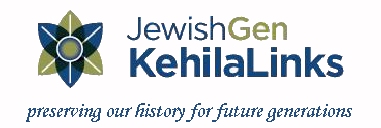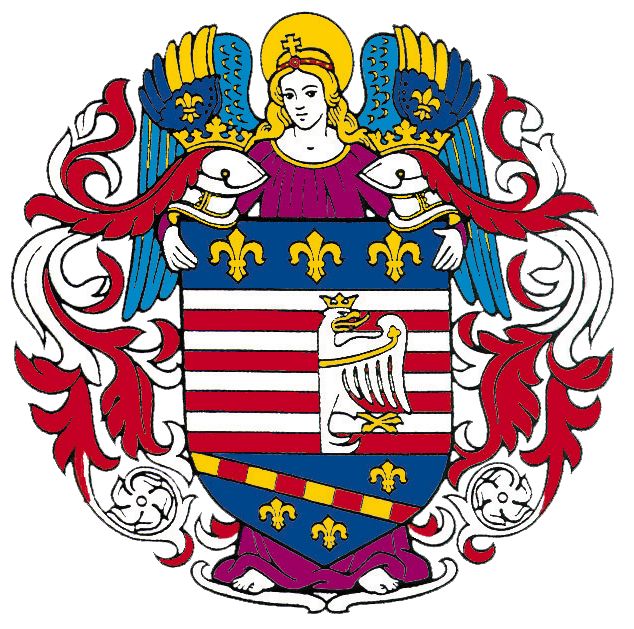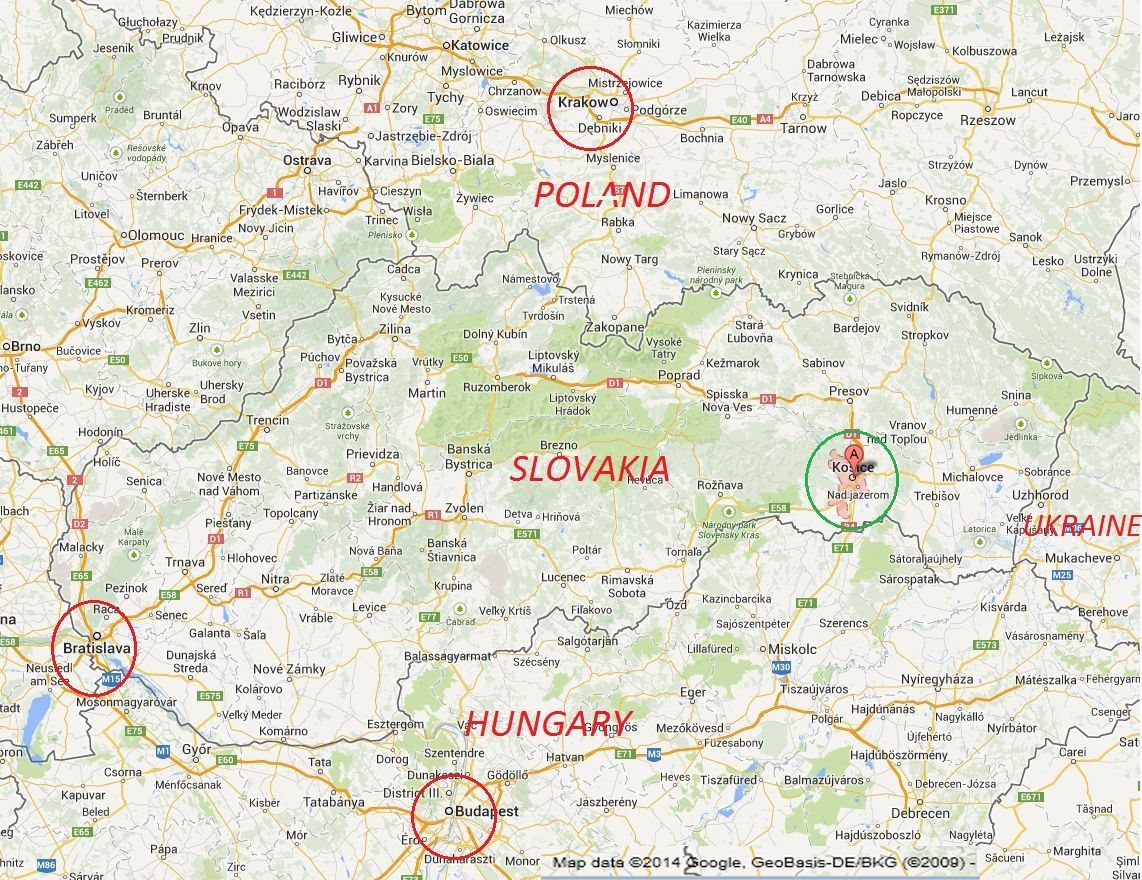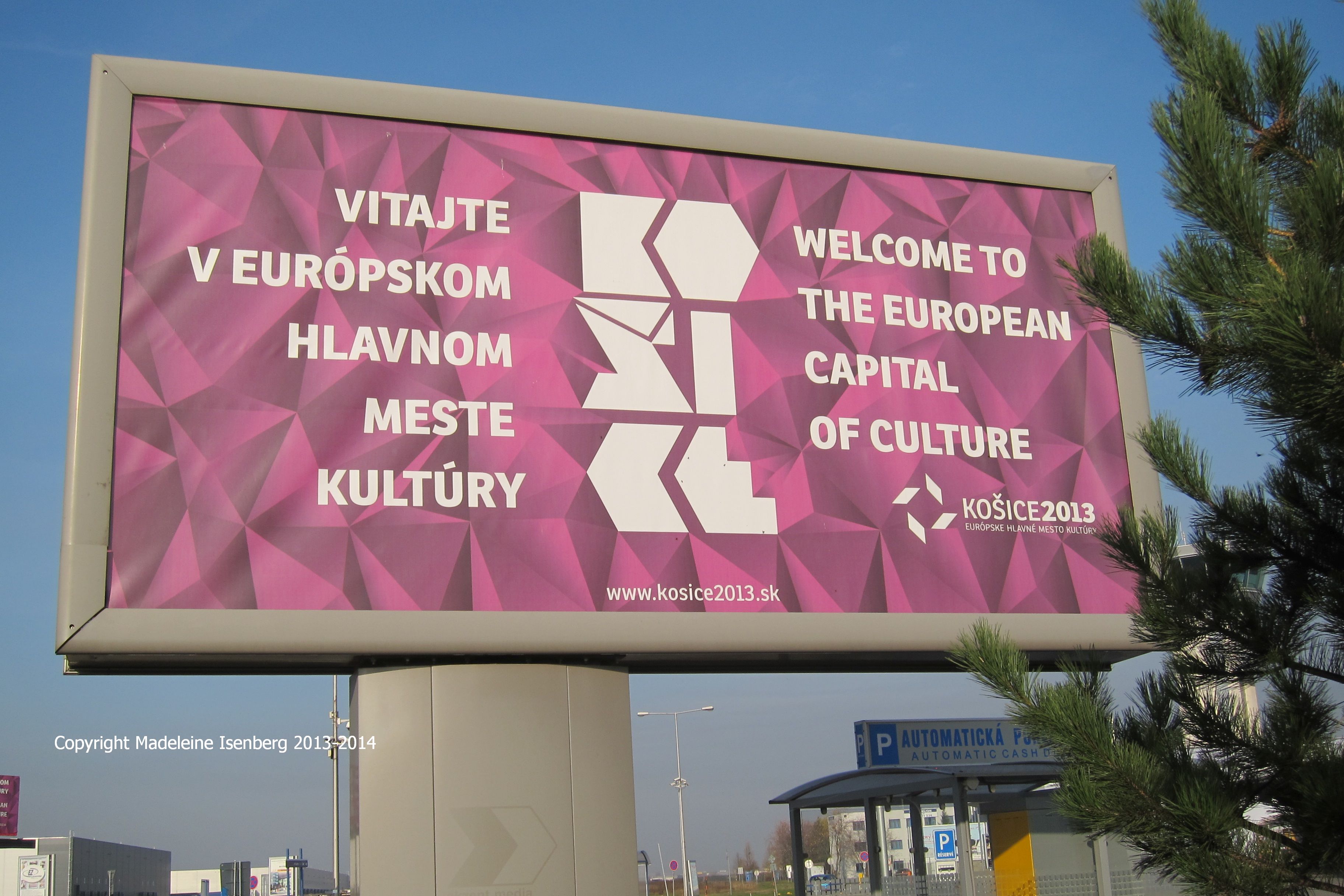
 |
| Home | Town Views | Religious | Holocaust | Family | Other | Contact |
 |
Košice, Slovakia |

 |
The four red
stripes in the coat of arms of Košice come from the
medieval coat of arms of the Hungarian Árpád dynasty.
The three golden fleurs-de-lis on an azure
field refer to the Capetian House of Anjou dynasty,
and the silver eagle to the Jagiellon dynasty.[1]
Košice is well known as the first settlement
in Europe to be granted its own coat-of-arms.[3]
|

Below is an adaptation, with corrections and additions, from a Beit Hatfutsot PDF for Kosice, given to Madeleine Isenberg at the IAJGS 2015 conference in Jerusalem, July 2015.
Kosice (Slovak: Kosice; Hungarian: Kassa; German: Kaschau) is a town in SE Slovakia, formerly Czechoslovakia.
Until 1840 Jews from the nearby village of Rozhanovce (Hung. Rozgony) attended the market in Kosice. But in 1840, they received permission to settle there. The statutes of the community (the Kehila), then comprising 32 families, were approved in 1843. The prayer room opened in that year was still in existence in 1970. The community began to prosper in 1860 when Kosice became a railway junction. Many of the town's industries - for example, a brewery, flour mills, a soap factory and large brickworks - were founded by Jews.
By 1869 there were 2,178 Jews (10% of the total population) in Kosice and by 1910, 6,723 (15%). The construction of a synagogue in the reform style split the Neolog and Orthodox communities in 1866.
Kosice absorbed many World War I refugees who remained there even after the war.
The community profited from the town's position as the gateway to Subcarpathian Ruthenia (Carpatho-Russia) in the newly created Czechoslovakian Republic. The American Jewish Joint Distribution Committee established its regional headquarters in the town, as did other Jewish and Zionist institutions. The majority of Jews were active in commerce, with others in industry and the liberal professions.Both communities supported elementary schools where Hungarian was the language of instruction. The Kosice Yeshiva was among those recognized by the government as an institution of higher learning. When a new Neolog synagogue was built in 1927, the Status Quo Ante community (which increased from 236 members in 1914 to 700 in 1927) took over the old synagogue, adapting it and demolishing the towers. The Chasidim also built their own synagogue.
Rabbi Dr Ernest (Ephraim Yehudah) Wiesenberg (see modified tribute from Cambridge University), rabbi and scholar, was born in Kosice in 1909 and died in London on 21 January 2000.
In 1930, 11,195 Jews lived in Kosice.
Before World War II (September 1939), immediately after Hungary annexed the town (November 1938), anti-Semitic economic restrictions were applied; initially, against those holding government licenses (e.g., tobacconists, restauranteurs, and lawyers). After the war broke out refugees from Slovakia and Poland went to Kosice, and in 1940, 3,000 persons were supported by the Hungarian Jewish relief organization OMZSA.
From 1940, all Jewish men aged between 40 and 45 were conscripted for forced labor and those between 21 and 40 for the Hungarian army labor-battalions serving in Russia. Kosice absorbed another wave of refugees when the Slovakian deportations began (1942). With the German army's setbacks the Jewish position in Kosice improved, but when Hungary was occupied by the Germans in March 19, 1944, hostages were taken, a Judenrat formed, and large sums of money extorted from the community. Until April 28, 11,830 Jews had been confined to 11 streets, but these were reduced to three on April 30. Finally they were ordered to move into the four-acre area of the local brickworks.
From May 15, deportations to the Nazi extermination camps began. Some Gentiles who had given help to Jews were deported with them. By June 7, Kosice was Judenrein.
Note: You can see more about Kosice's vital records and cemeteries also in these pages.
References:Many sites exist for information on Kosice and some references are provided here, such as:
http://www.kosice.sk
There have been
visits to this page since 10 September 2014
|
Compiled by
Madeleine Isenberg
Originally created 10 September 2014 Updated 10 Sept 2023 Copyright © 2014-2023 Madeleine R. Isenberg All rights reserved. |
Back to KehilaLinks |
|
Back to JewishGen |
|||
| Top
of Page |
This site is hosted at no cost by JewishGen, Inc., the Home of Jewish Genealogy. If you have been aided in your research by this site and wish to further our mission of preserving our history for future generations, your JewishGen-erosity is greatly appreciated.